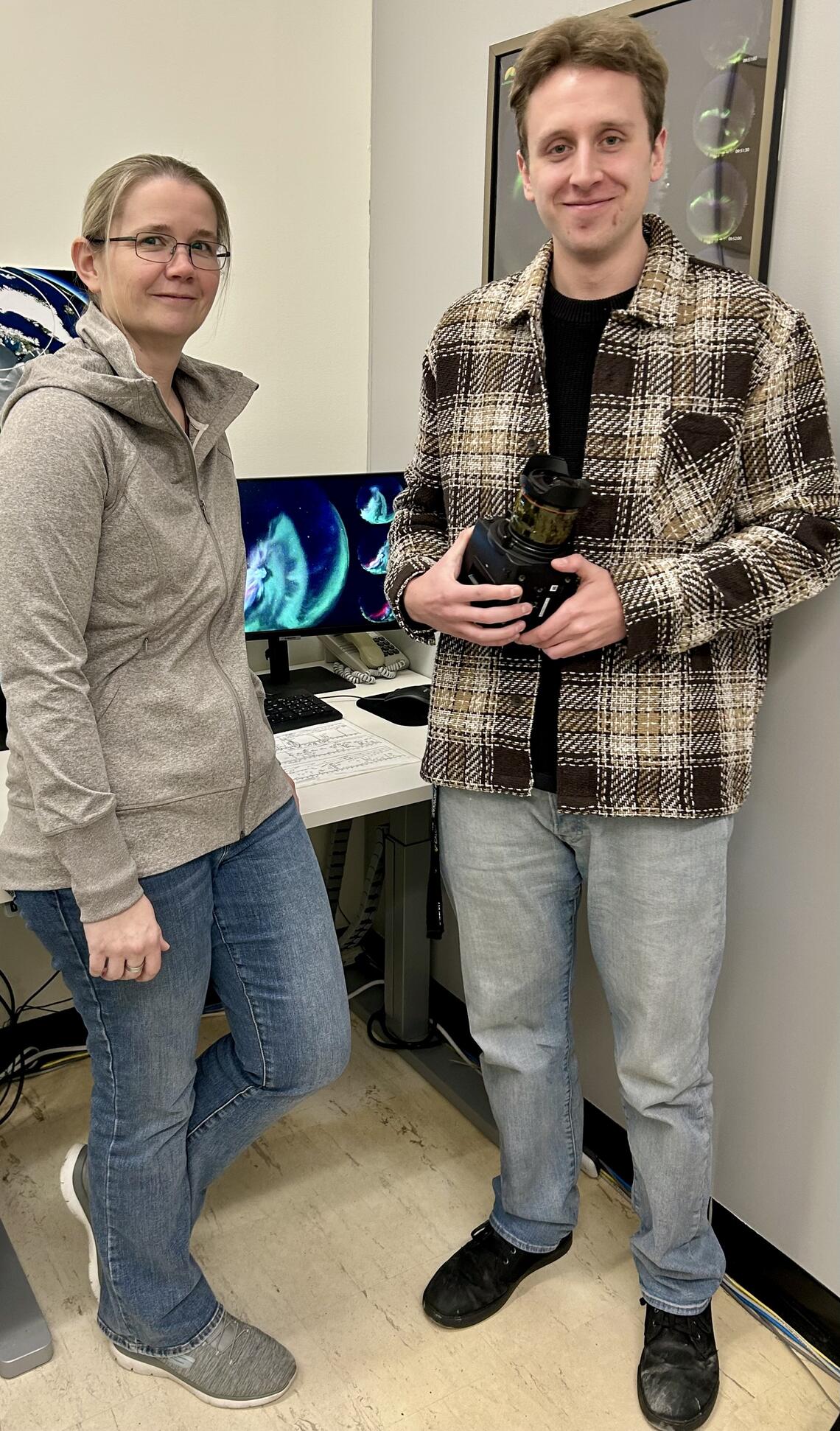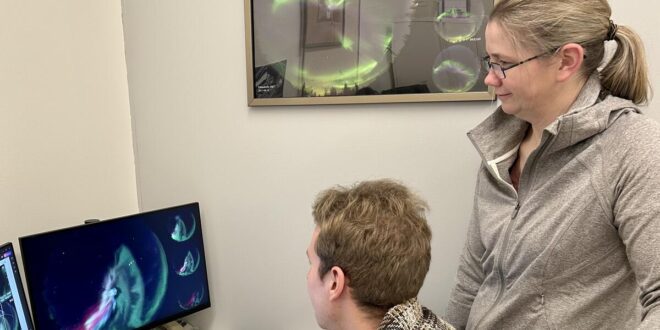Aurora Borealis Mystery Revealed
A whitish, grey patch that sometimes appears in the night sky alongside the northern lights has been explained for the first time by researchers at the University of Calgary.
The article, which was published on Dec. 30 in the journal Nature Communications, explores a “structured continuum emission” that’s associated with aurora borealis.
“You’d see this dynamic green aurora, you’d see some of the red aurora in the background and, all of a sudden, you’d see this structured – almost like a patch – grey-toned or white toned-emission connected to the aurora,” says Dr. Emma Spanswick, PhD, lead author on the paper and an associate professor with the Department of Physics and Astronomy in the Faculty of Science.
“So, the first response of any scientist is, ‘Well, what is that?’”
Spanswick says the white patch has been referenced in scientific papers before, but it has never been explained.
Her team’s paper concludes it’s “most certainly a heat source” and says it suggests that the aurora borealis are more complex than previously thought.
Advancements in Camera Technology
Spanswick says the discovery was made possible because an advancement in camera technology allows both amateur photographers and scientists to see true colour images of the night sky.
“Everyone has noticed the advancement in digital photography. Your cellphone can now take pictures of the aurora,” she says. “That has flowed to the commercial sensor market now.

Emma Spanswick and undergraduate student Josh Houghton look at the whitish, grey patch that sometimes appears alongside the northern lights.
Colette Derworiz, Faculty of Science
Continuum Emission Research
The team’s research came after there was a renewed interest in continuum emission with the discovery and observations of the long, glowing ribbon of purple light known as STEVE – or Strong Thermal Emission Velocity Enhancement.
“There are similarities between what we’re seeing now and STEVE,” explains Spanswick. “STEVE manifests itself as this mauve or grey-toned structure.
“To be honest, the elevation of the spectrum between the two is very similar but this, because of its association with dynamic aurora, it’s almost embedded in the aurora. It’s harder to pick out if you were to look at it, whereas STEVE is separate from the aurora – a big band crossing the sky.”
Student Participation and Future Research
The latest research is also significant because it includes three UCalgary students, including undergraduate Josh Houghton who was initially hired as an intern on the project.
Houghton will continue the research as part of his undergrad honours thesis, before taking on his master’s degree at UCalgary next year.
The research was made possible by the Transition Region Explorer, which is a UCalgary project jointly funded by the Canadian Foundation for Innovation, the Government of Alberta and the Canadian Space Agency.
The TREx RGB and Spectograph instruments are operated and maintained by Space Environment Canada with the support of the Canadian Space Agency through its Geospace Observatory (GO) Canada initiative.
 Mind Uncharted Explore. Discover. Learn.
Mind Uncharted Explore. Discover. Learn.

